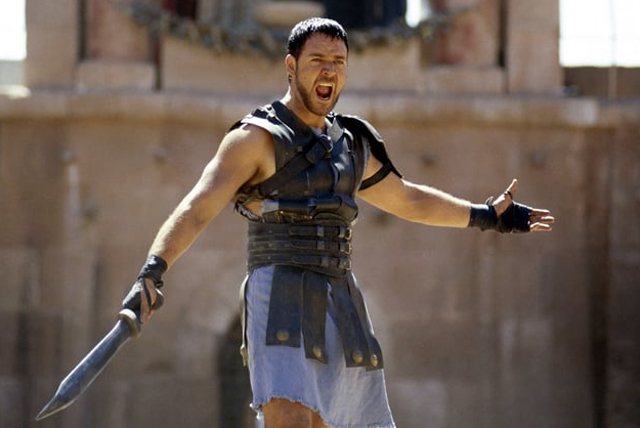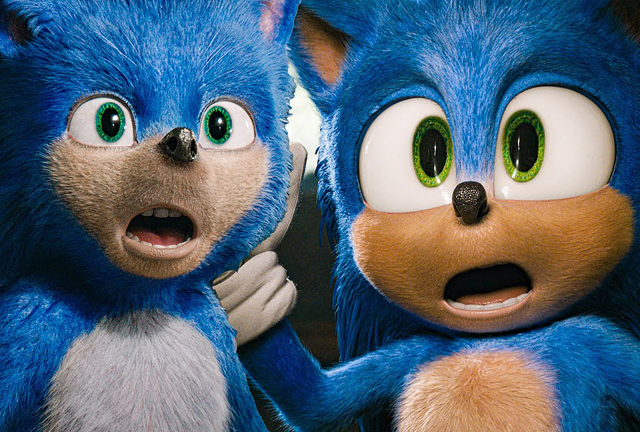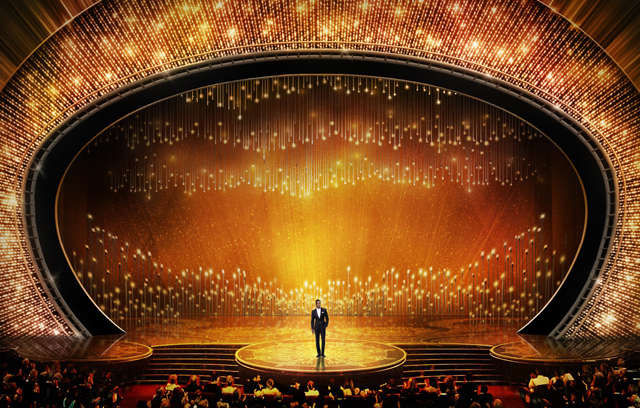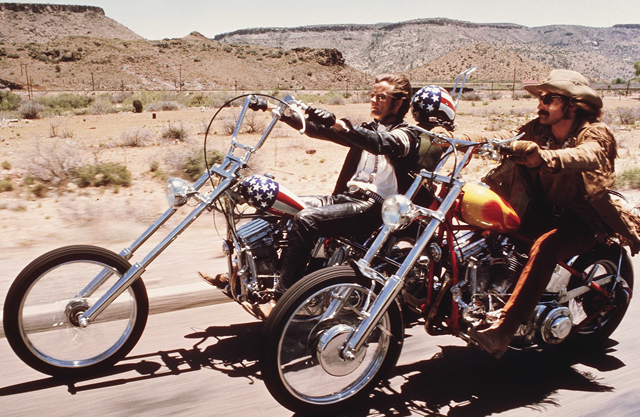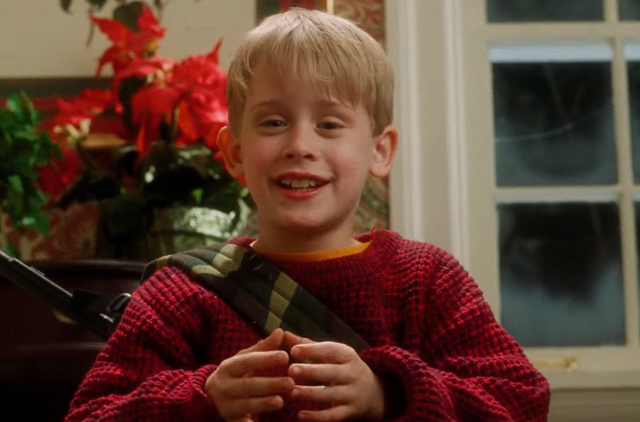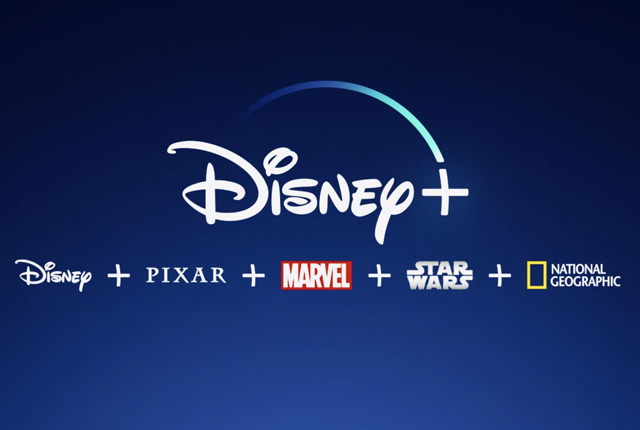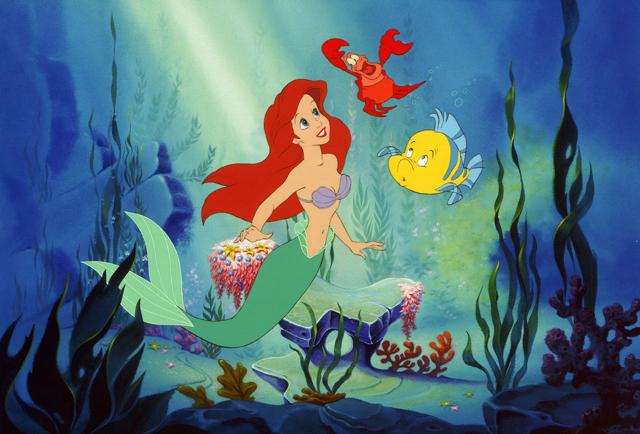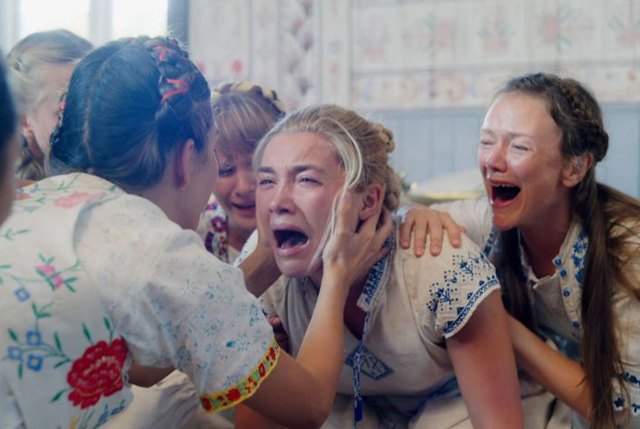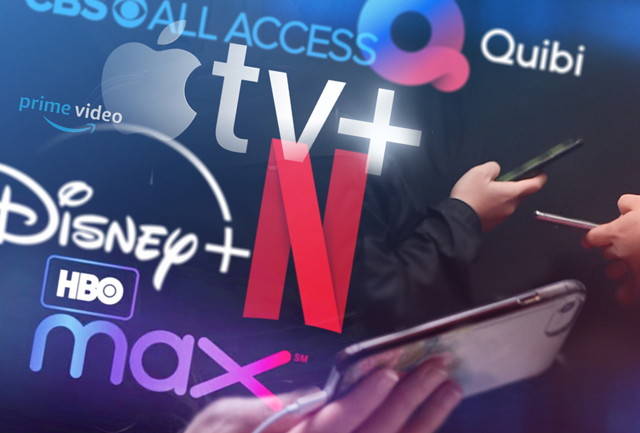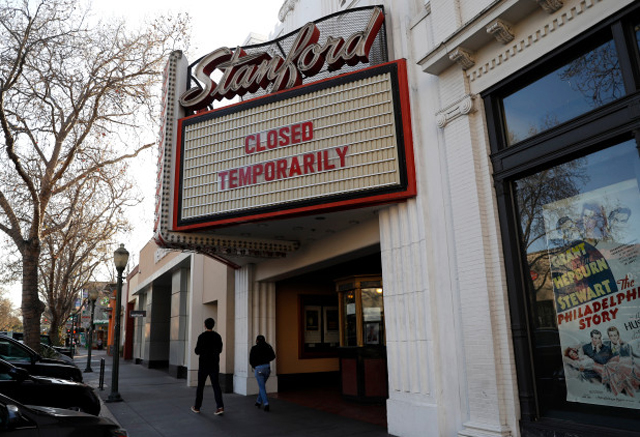
It’s the kind of thing that you always see play out in the movies, but never think it may actually happen for real. However, this week, the entertainment world was faced with that unfortunate reality. In the face of a worldwide pandemic, the movie industry enacted an unprecedented shutdown in order to help the containment of the highly infectious Covid-19 coronavirus. This included the postponement or outright cancellation of many upcoming movies within the next few weeks, as well as further cancellations of media events across the world. The South by Southwest (SXSW) festival in Austin, a major destination for independent filmmakers to premiere their new projects to the public, saw it’s first cancellation in it’s entire history. Other key events like Coachella, CinemaCon, and various others also have put the brakes on their plans over the next few months. Here in Los Angeles, things have also gotten seriously dire. Many productions have been shut down until further notice. Industry employees are now being told to work from home. We even got the shocking news that beloved Hollywood star Tom Hanks and his wife, actress Rita Wilson, were among those infected with the disease. Not only that but Disneyland and Universal Studios had to shut their gates to guests, disrupting a major source of income for both of their parent companies. In total, this is a lock-down of an entire industry that was thought unthinkable before, and yet is happening before our very eyes. That’s not to say it’s not warranted either. It’s better to be over-prepared than under-prepared in a case like this, and no one in the movie industry, not the studios or the theaters, wants to be responsible for making a bad situation even worse. But though the short-term situation is all about caring for the safety of the public, it also is leaving the industry in a wary position about how this will effect them in the long run.
Only a short couple of weeks ago, things looked like they were going to go on as scheduled in Hollywood. The coronavirus was making the news, but it was a far off menace, effecting the Asian markets more than anything. Then the first cases began to hit the United States and Europe, and it grew rapidly from there. The landslide began with Sony deciding to pull the new James Bond film, No Time to Die, out of it’s planned April 2020 release and pushing it all the way to November. It was a risky move, as advanced tickets had already been sold to customers, but Sony recognized that it was not worth the risk depending on how serious things were getting. The worries were also mounting after Disney and Pixar’s new film Onward opened to tepid box office last week, leading industry professionals to believe that people were staying home to be safe. And that led to the bottom falling out this week, with pretty much the entire slate of upcoming Spring movies either being delayed or taken off the calendar completely. This included heavy hitters like the horror sequel A Quiet Place: Part II and Disney’s live action remake of Mulan. Even Fast & Furious 9, which wasn’t slated to release until mid-May, moved itself back a full year. It’s all in response not just to the outbreak that has occurred, but the threat that it could get even worse. And that is why we saw the drastic measures that were taken this week. Poor Onward is going to be left out in the cold having to try to make up what it can in a market that is all but shutdown. As of this writing, many theater chains have yet to cease operations, but given how the studios have pulled so many of their upcoming releases from the schedule, I don’t know how much longer they can continue doing business like normal.
The ripple effects of these decisions will no doubt leave their mark on the industry. This is almost certainly going to be the biggest disruption the industry has faced since the Writer’s Guild strike of 2007. And in many ways, it could be far more disruptive than that. The strike, even as protracted as it was, still didn’t effect the theatrical end of the business. Theaters were still able to capitalize on the backlog of already completed movies to see them through the slowdown of production. The strike more or less was more disruptive to the television end, which had to see many of their programs go on protracted hiatuses. But this situation could be far more destructive to the theatrical side than anything else we’ve ever seen in the history of Hollywood. If theaters do have to close over the next couple weeks, it will be a major loss of income for both the theaters as well as the studios that make money off of the box office returns. And moving all these movies to later dates already signals to these theater chains that they are going to see far less business in general for quite some time. It’s the tough call you have to make in a time of uncertainty such as this one, and no matter what, businesses are going to suffer. For an industry that has already been struggling in the wake of the rise of Netflix and it’s competitors, the movie theaters are in their most vulnerable position yet, possibly facing the final blow to their industry in general. Of course, that’s assuming that this virus can not be contained quickly, and that audiences will return in droves once the crisis is over. As someone who has come out of the theatrical industry myself, my hope is that those who work in these theaters and are doing their best to help stop the spread of this disease don’t end up seeing their life and careers torn apart by a crisis that is fully out of their control.
That’s the first point where we may see the long lasting effects of this virus’ impact on the industry. The movie studios can make the choice to hold back their films, but it also means that they will see a disruption in their revenue for the year. No one is going to come out of this unscathed, and already many of the major studios are already looking at 2020 as a lost year for the industry. Disney has already lost 20% of it’s stock value, even losing a big chunk before the virus hit our shores due to their closure of the Asian theme parks and loss of the Chinese market at the box office. Disney is big enough to rebound eventually, but this will no doubt leave them wounded for some time. Thankfully, Disney is not doing anything reckless to try to counter their losses, and are following every health guideline to ensure that no one is going to be further exposed to their viruses on any of their properties. Yes, closing down nearly all of their theme parks is going to cost them millions, but it’s better than the millions more they might have lost due to bad publicity if an outbreak broke out on their watch. This is a time for tough choices, and it may end up changing the industry in the long run. Certainly, the short term money issues will affect what gets green-lit in the months ahead. It may end up convincing executives to rethink their strategies for tent-pole features, especially those with out of control budgets and troubled productions. We may see much less of the likes of Marvel and Star Wars blockbusters, because their enormous costs will not justify their productions in an industry where you aren’t certain if there will be any box office revenue on the other end of it. This effect is something we might not see for a while, as most big budget films like Bond’s No Time to Die and Marvel’s upcoming Black Widow are already in the can and ready to go. But, a year or two from now, we may see a much quieter and subdued slate of releases from an industry that is less willing to take costly risks.
That is to say, if the spread of the virus does get much worse in the weeks ahead. The best hope that we can have is that these extreme measures taken by Hollywood and the theater chains do help to stem the tide of the outbreak, but at this point, no one knows what will happen. The film industry is in uncharted waters right now. This is especially true when you are dealing with the possible exposure of people within the industry to the disease. The announcement of Tom Hanks having being diagnosed really put a face on the pandemic that hadn’t really hit home for most people up to that point. And when it became apparent that anyone, even a movie, star could come down with the disease, than it essential for everyone to take this disease with complete seriousness. The one blessing is that Covid-19, despite being dangerously contagious, is not as destructive as past pandemics like the Bubonic Plague, Smallpox, and Yellow Fever. Tom Hanks and Rita Wilson will make a full recovery, there is no doubt about that, and so will most people who become effective. The danger is not so much how badly it will make the person ill, but in how fast it will spread from person to person, and lead to infections of people unlucky enough to have weakened immune systems that can’t fight the disease. This outbreak is putting us on a learning curve of what a pandemic in the 21st century can look like, and hopefully we will learn the lessons of it in order to be ready for when the really bad pandemic starts to span across the globe. It’s the one silver lining that we can take from this; this outbreak is exposing the weak-spots in our disease prevention system, and will hopefully lead us to fixing them in the near future. In many ways, the drastic measures taken by the film industry is a noble bit of sacrifice in order to make up for the other parts of the disease control system that have utterly failed us.
Though the theatrical market is going to feel the effects most directly, it doesn’t mean that Hollywood is going to shut down completely. Once the disease is under control, the industry will start up production again. And this is largely due to the more diverse market we now have with distribution. This is going to be a boom time for streamers like Netflix and Disney+. While people are staying away from the multiplexes, the streamers are going to benefit from increased viewership as people stay home. This will no doubt lead to an increase in subscription, as people on the fence will be more wiling to commit to signing up. For Disney, they certainly have this to look forward to as their much publicized streaming service is going to have to carry the load while the theatrical side takes a hit. The streaming market may also be the only choice that a lot of smaller films will have left to be seen by a wide audience if the theaters start to close their doors. The cancellation of SXSW and the possible postponements of the Tribeca and even Cannes Film Festivals could lead to the loss of exposure for many important movies that were hoping to get a boost and also distribution over the course of the year. You really see how crucial the Festival circuit is to the industry as a whole when the possibility of it’s cancellation puts so many film’s futures in doubt. These are the kinds of movies that are likely going to be up for the Academy Awards next year (like Palm d’Or winner Parasite ended up being last year), and getting the head start from the festivals is what helps to build the hype they need in the first place. If the theaters do close, hopefully Netflix, Hulu, and the like will swoop in and give these movies the audience that they deserve. At the same time, it will be another step towards streaming taking over as the dominant force that it is already becoming in the industry as a whole. And that is why the theatrical side is especially wary about how this pandemic is going to affect the future of movie experience as a whole.
For the first time in a long while, Hollywood is not in control of it’s immediate future. It is going to have to weather the storm and hope that it will come out of it in one piece. Wars, terrorism, and even industry shutdowns have not made things as uncertain as it is now. Hollywood has just done it’s best to just carry on as best as it can. But with the spread of this disease already cutting deep into the profits that they have relied upon for so long, Hollywood is right now just hoping for the best outcome they can. In truth, this will no doubt change the industry. We’ll see a constraining of budgets over the next couple of years in order to make up for the lost revenue of this year. The theatrical side will see it’s biggest disruption ever, which may end up closing many screens for good; a huge loss not just for the industry but for local communities in general. We’ll likely see streaming emerge as the savior for a shaken industry when all is said and done, and the theatrical experience further become a shell of what it once was. But, this is all uncertain as well, as no one can say exactly what is going to happen over the course of this year. We just know that there is going to be an immediate economic cost to the industry with so much of it’s revenue sources being cut off. One can hope that the studios are prepared for a scenario like this and that they don’t loose faith in the return of audiences to their films. It’s just, how will those audience end up turning up in the end. We are going to experience a quieter Spring, that’s for sure, and hopefully the measures taken today will ensure that the rest of the year doesn’t get disrupted either.
For me myself, I am taking all the needed measure that an individual should do to avoid getting sick. I am washing my hands regularly, and keeping my living and working spaces sanitized. The outbreak has reached my home-base of Los Angeles, and I have seen everything from the theme parks to the live entertainment venues all shut their doors over the course of the last couple days, leading to a decreased level of entertainment within the city. Local theaters have also shut their doors, though the big chains have yet to close as of this writing. It’s also unfortunately led to the cancellation of this year’s TCM Classic Film Festival, which has been a staple of this blog since I started covering almost 6 years ago. It’s a depressing time, but at the same time, necessary. We have not seen an outbreak on this scale in a long, long time, and the drastic measures taken are to ensure that more people don’t get sick. It’s not the worst disease we could be facing, but it’s certainly nothing to take lightly either. Thankfully, because I write this from the comforts of my own home, it will not keep me from writing. Expect to see more articles from me every week, even as the industry goes on lock-down. I may end up spending my time catching up on what’s playing on Netflix or Disney+, and writing about stuff like that. My worry is that whatever may happen after this pandemic, it’s going to lead to an increased diminishment of the theatrical experience. I am one of those who still prefers that to sitting at home and watching TV. There are worse things that will result from this pandemic, but to me, this will be the thing that hurts the most. I hope that when the studios do start releasing their delayed films that they do so with a firm commitment to bringing people back to the cinemas. We need the movies now more than ever to keep the world upbeat, and if it has to go away for a while for everyone’s safety than so be it. But never forget, the greatest connection we have to movies is when they can bring us together as a community, and that is something worth preserving after a time that is forcing us into isolation.
